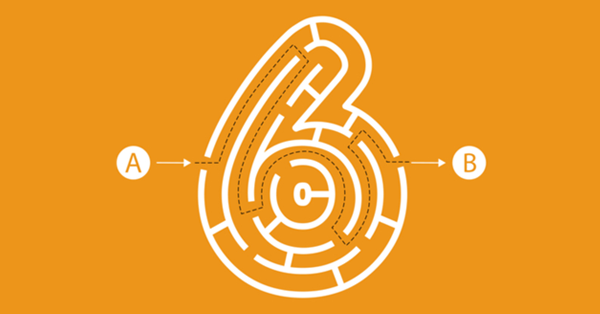Part three of a three part observation series
In my last post we examined a few ways that banks can elevate the role of data in their marketing programs to begin the process of gaining better alignment to overall strategy. This post will focus on the sales aspect of sales and marketing campaigns – what can be referred to the execution channel. But a word of caution: sales and sales people are no longer synonymous.
As with our data post, you will find five areas of focus for bank marketers to enhance sales activities. Since we emphasized the critical nature of list development driven by strategy, we would be remiss if we now veered back to traditional sales activities to execute the program. Modern marketing programs should create buyers - not just serve as a ‘warm lead sheet’ for field staff.
[5] Tips to Enhance Your Bank's Sales and Marketing Initiatives
1. Assess your sales channel capabilities and capacity (honestly)
The pressures on marketers to maximize the opportunities for bank sales channels to deliver positive results are significant. Let’s face it, the number of internal business units lined up to leverage every possible sales channel within any given bank often requires an air traffic controller to manage. While we primarily think of bank sales channels as branches and business development officers – supported with direct mail, digital marketing or other messaging platforms - the increasing use of call centers and outsourcing firms are also gaining greater demand for their services.
As marketing investment returns continue to be heavily scrutinized, it is time to look at all of your sales channels and honestly assess both the capability and the capacity for all of them. Branches serve as an effective channel for many activities due to staffing models and periodic downtime to facilitate campaigns, but they shouldn’t be used to support every initiative – for a variety of reasons. Nor should a dedicated sales force be the only source through which a business unit should promote its offerings – it is more expensive and requires differentiated segment expertise to be effective.
Emerging technology has enabled greater levels of channel diversity to support a bank’s sales and marketing campaigns – knowing how effective and available these channels are should create a more dynamic set of "selling" tools for you to use that can better align with your target segments. Taking advantage of these channels allows you to push your sales messages out to the market with less conflict and noise.
As an aside, I recently read an interesting piece from the UK highlighting the preferences for SME’s for sales and service. No matter the geography, it is never a good idea to assume that you and your customers assign the same value to what your institution offers.
2. Measure the value of each channel in your omnichannel programs
Yes, I realize a key marketing buzzword had to make it into this post. While a daunting term, omnichannel (click here to read a very academic definition of omnichannel if you are not already familiar with the topic) has become a marketing darling lately with the introduction of so many devices and access points for customers to interact with their financial institution. As one who is very interested in the topic of payments, I am sensitive to not only the advancement in device and technology capabilities but also the fluid nature of how the market finds new ways use them that may not have been intended by the provider or the bank.
It is a stretch to ask that a full blown omnichannel approach finds its way into every bank’s strategy - but the aspiration of the topic - and expectations of your target audience - cannot be ignored. At a minimum, begin to develop a digital strategy for your institution – starting with your web presence. If you can market an offer online, shouldn’t your customers be able to take advantage of the offer online? Seems pretty simple but those that have thought through and delivered on this alignment are differentiating themselves in the market, particularly with business segments. Maybe you don’t call it omnichannel – call it whatever you like – but you have to have a plan for it because at some level isn’t a branch just another device?
3. Invest (more) in sales and onboarding automation
Despite the title, many banks appear to be heading in two different directions with respect to technology investments to support sales activities. On one hand, the piggy bank has been smashed open to fund KYC/BSA/AML initiatives over the past five years. On the other, investments into leveraging that investment into a better customer experience seem rare, if not nonexistent.
It is fascinating that while blank checks have been written to support the ever changing world of compliance – believe me when I say that essentially no two banks have the same interpretation of the same commentary on the same day – banks don’t seem to realize that most of the current compliance language was written before any of the current technology existed and aren’t really consistent with today’s technological benefits.
Rather than succumbing to the ongoing maintenance of antiquated processes to address these compliance issues, why not look to leverage your bank’s investment into this robust set of tools to enhance your sales and onboarding process. There is no reason that I have read that you cannot undertake this effort - and the robust nature of these tools (such as real-time predictive transaction reporting and behavioral modeling) can truly differentiate your customer experience from the frustrating process it is for many today.
4. Stop just selling banking products...sell your brand
If there is one mantra that I have held close for years for bank marketing, it is this: stop just selling products!
For most institutions, almost everything you offer is a commodity. While some may argue that their features and benefits or prices may be subtly different, you are still providing a highly commoditized set of financial products. But we all still do it, don’t we? Why? Primarily because focusing on products seems to work - with an emphasis on seems here. We outlined a number of data driven themes in our previous post which would on the surface seem to support more granular capability to target offers to prospects – all true.
I am not naïve thinking that this will change anytime soon. But what I do hope is that your selling efforts are able to transcend this. Focus on what your institution can offer that your competitors cannot – true competitive differentiation. Besides your location and name – apologies to all of the First Banks out there – what do you have that customers and prospects cannot get anywhere else? Most likely your answer is not much. Bank marketers don’t help matters by continually reinforcing messages that are based on features and benefits that customers can find anywhere (and expect) - starting with service.
Note: I have worked with both the largest banks in the U.S. and very small Credit Unions and truth be told, you can receive outstanding service from big banks and lousy service from small Credit Unions. There is no universal ownership of service culture in smaller institutions. Let’s take a page out of the consumer packaged goods playbook and start to sell your brand first; the products are a given.
5. Incent sales on more than widgets
The topic of incentive in sales has been long lamented and hashed and rehashed. We don’t mean to do it again on this post but it would be irresponsible to not highlight the recurring challenges for how sales is evaluated. As the final item to recommend for an honest assessment, it is past time to measure sales effectiveness - regardless of channel or channels used - based on widgets.
Every banker knows that the value of each customer is not the same, and multiple product relationships are certainly stickier than single relationships. So what is the value of an unutilized line of credit or a low transaction account that meets minimums and generates no fees? If you look at some of the scorecards we have seen over the years, you would think they are all worth the same. Not to mention, fully loaded some banks are paying out incentives for these dormant relationships because a widget is a widget. If you haven’t taken on this topic recently, please begin to do so. If you have invested in a strategy and chosen to align your data activities to that strategy, this should be fairly easy.
If you like selling stories, click here to read one of my favorites from a recent BKM prospect meeting.



![[3] Tips to Maximize Your Budget by Improving Your Bank's Targeting](https://www.bkmmarketing.com/hubfs/Businessman%20looking%20forward%20with%20binoculars%20cloudy%20background%20and%20graphs%2c%20charts%20around.jpeg)


SUBMIT YOUR COMMENT